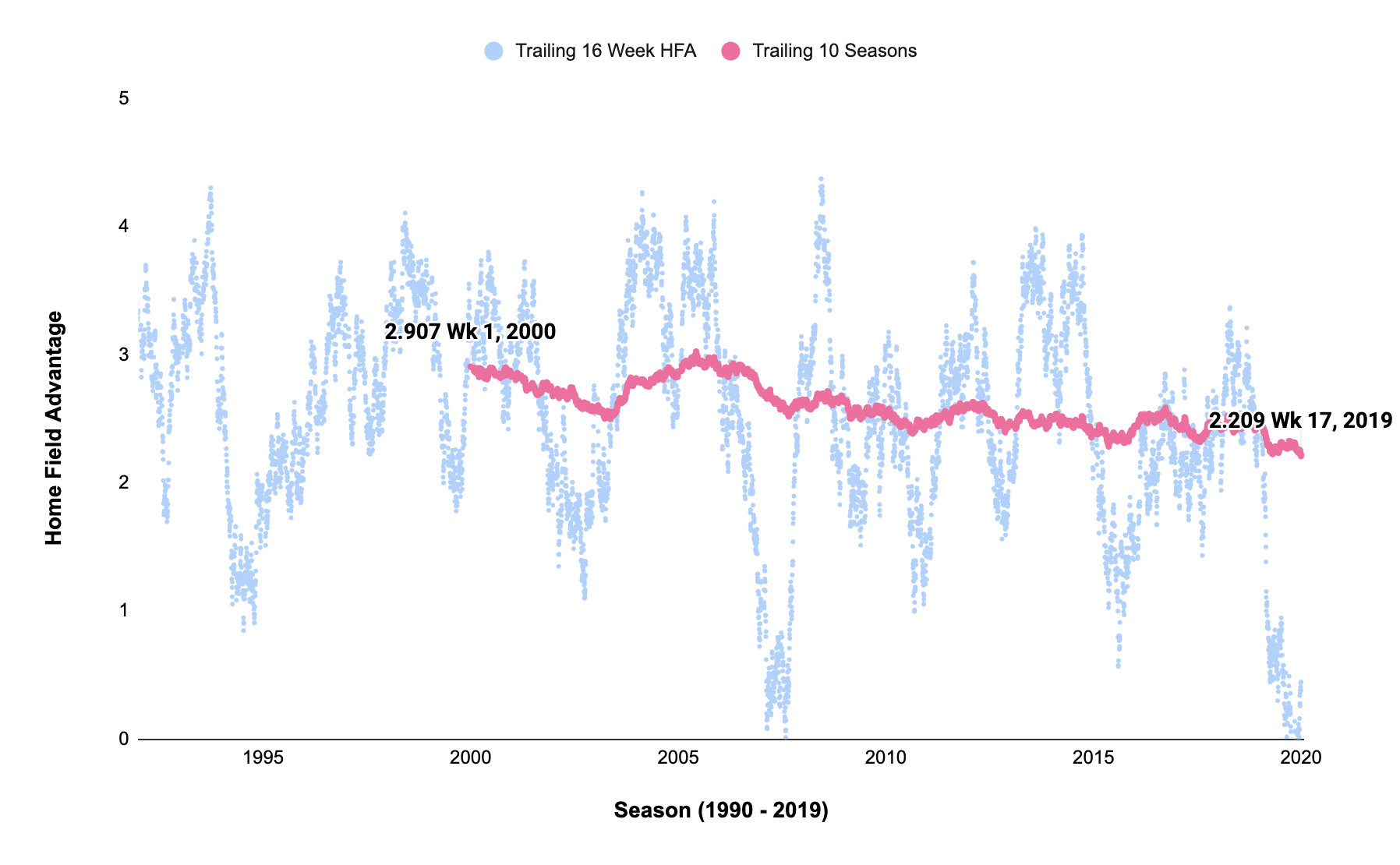Through price discovery, markets produce incredibly accurate predictions about the future. Even the best models can benefit from regressing their predictions to those of the market. Using these methods, models like nfelo can predict NFL margins better than the market by itself.
Read MoreNFL margins can be tough to model due to the higher probabilities of key numbers. Treating each key number as its own distribution creates a generalized model that can more accurately predict margin distributions and expected value
Read MoreSummary
WEPA is a framework that weights EPA to improve its predictive power
The goal of WEPA is to use publicly available play-by-play data to create an open source model that is free, reproducible, and more predictive than proprietary alternatives
The 2018 WEPA proof-of-concept suffered from overfitting and used forward looking data to train, resulting in an unreliable model
This post addresses these issues while improving the model through an expanded dataset and feature group
The new WEPA model is substantially more reliable and predicts future point margin better than current proprietary alternatives
HFA trends are volatile at the individual season level, but long term trends show a steady decline. From 2000 to 2019, trailing 10 season HFA declined from 2.9 points to 2.2 points
Individual teams may experience periods of elevated HFA, but elevated HFA is not predictive of future elevated HFA across any window of games
Variation in HFA for individual games does not appear to be significantly influenced by the mileage traveled by the away team. Away travel correlates with divisional games, which exhibit a much stronger relationship with HFA
Modeled HFA is 2.95 non-divisional games and 1.59 for divisional games
Final scores are reasonable predictors of future performance, but game grades like DVOA and WEPA are measurably better
Individually, WEPA was the best game grade tested, beating both DVOA and PFF in descriptive and predictive power
Even when a game grade isn’t as predictive of future performance as other game grades, incorporating it into a blended game grade yields a metric that is more predictive than any individual game grade
Depending on implementation, a game grade that blends Point Differential, WEPA, and PFF tends to perform best
By weighting certain play types, Expected Points Added (EPA) can be made more accurate than Point Margin in predicting out of sample Point Margin. Even without controlling for strength of schedule, homefield, or any pre-season priors, a weighted EPA can even be more accurate than DVOA, which includes all of the aforementioned data points.
Read More






